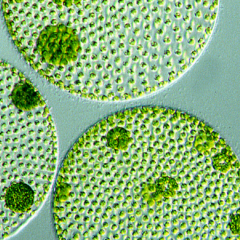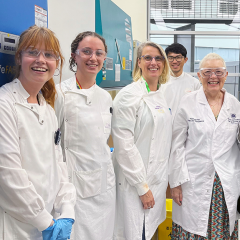Mapping the evolutionary history of the world around us is now a whole lot easier, thanks to a new mathematical method developed by scientists at The University of Queensland’s Institute for Molecular Bioscience.
The method offers scientists a faster way to manage and make sense of the massive amounts of genetic data — produced by DNA sequencing technologies — needed to create evolutionary trees.
Evolutionary or phylogenetic trees — also known as “trees of life” — help scientists to visualise the relationships between groups of organisms.
They first appeared in Charles Darwin’s 1859 book The Origin of the Species.
Lead IMB researcher Professor Mark Ragan has spent 15 years exploring ways to speed up the production of these “trees of life”.
Professor Ragan said creating the trees required complex comparisons between large numbers of genetic sequences from selected organisms, which was a laborious, time-consuming task requiring immense computing power.
“In recent years we’ve seen the popularity of genetic sequencing rise and the costs of sequencing drop, so developing new methods to efficiently compare large volumes of genetic data has never been more important for the research community," he said.
“For more than 50 years, researchers have thought that to compare the genetic sequences of organisms, it was necessary to begin by making a multiple alignment of the genes.
“Multiple-sequence alignment is tough to get right, so we have developed an alignment-free method that can create a robust phylogenetic tree that can be equally or more accurate, but is much quicker to produce.
“With our method, you can skip the alignment step, which means you don’t have to painstakingly assemble the genetic data first, so we can create these trees thousands of times more quickly than ever before."
Professor Ragan said he hoped the new method would have useful applications beyond evolutionary biology.
“Researchers can also use this method to study how genetic material moves between bacterial genomes to cause disease, and to better understand and manage complex natural environments such as agricultural soils or coral reefs,” he said.
The study was published this week in Scientific Reports and was supported by UQ, the James S McDonnell Foundation, and the computational resources of the National Computational Infrastructure (NCI) National Facility and Specialised Facility in Bioinformatics.
To make a tax-deductible donation to Professor Mark Ragan’s research, visit imb.uq.edu.au/donate or call +61 (07) 3346 2134.
ENDS
Media contact: IMB Communications Manager Gemma Ward, 07 3346 2134 or 0439 651 107.



